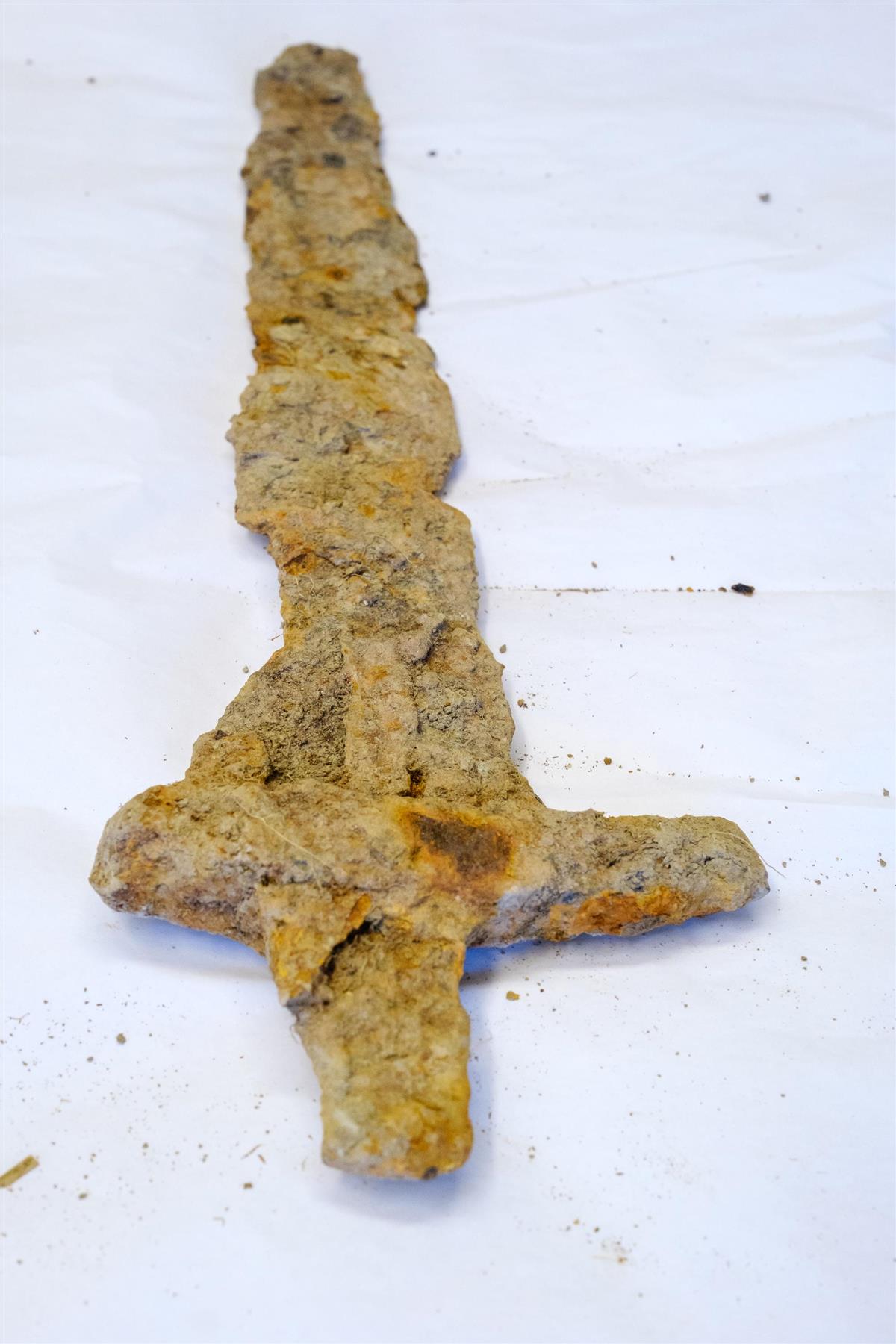Farmer discovers 1,000-year-old rare Viking sword type Ulfberht
Categories: Nálezy nejenom s detektorem ve Skandinávii
While cultivating a field that had not been ploughed for many years on a family farm in Suldal in south-western Norway, local farmer Øyvind Tveitane Lovra and his son discovered a rare Viking sword. Lovra initially thought it was part of an old piece of farming equipment, but upon closer examination he recognised the torso of a Viking weapon in the object. Only 170 swords of this type have been discovered in the whole of Europe.
"I quickly realised that this was not an everyday find. It was a given for me to hand it in. It's about our history and it's nice to know what was here in the past. I think there were many Vikings here in Lovra," explained Øyvind finder Tveitane Lovra. After reporting the discovery to the local authorities, the sword was handed over to archaeologists from the Museum of Archaeology at the University of Stavanger.
About 35 cm of the sword has been preserved; in its original state it would have been about twice as long. Despite the heavy corrosion crust, the sword and hilt are in surprisingly good condition, thanks to the thick clay soil that has protected the sword for over a thousand years. X-rays revealed an engraving on the blade which confirmed that it is the so-called "sword of the sword". "A high-quality and valuable type of sword made in the Rhineland in what is now Germany and France. As a rule, it was marked with the inscription "+VLFBERHT+", which is considered to be the mark of the swordmaker and his workshop.
Ulfberht swords are known for their exceptional quality and high technical level of workmanship. They have been forged from the finest raw materials available. The blacksmiths who made these swords were among the finest craftsmen. Such swords were very popular and valued among the Vikings and were symbols of the high social status of their owner. The sword of Suldal has been tentatively dated to between 900 and 1050 AD.
Most of the 170 swords of this type found in Europe were discovered in burial contexts. Only 45 have been found in Norway and none so far in Rogaland, this being the first: "It is a very rare find. The sword was the greatest symbol of social status in the Viking Age and it was a privilege to be allowed to carry such a sword. It's not often that we as archaeologists get to experience something like this," explains Lars Søgaard Sørensen, the county council's cultural heritage archaeologist. He added that he had never investigated anything like this in his 25-year career.
Archaeologists have been searching the site using metal detectors, but have not found anything else. Experts are now working on conservation to better determine its age and decipher the meaning of the engraving on the blade. The sword from Suldal is becoming part of Norway's historical heritage and its examination may provide new insights into the Viking period and its technologies.
Roman Nemec
Sources: rogfk.no, uis.no, livescience.com
 finders
finders
 A sword torso with a crust, under which hides surprisingly well-preserved material with an inscription
A sword torso with a crust, under which hides surprisingly well-preserved material with an inscription
 The sword dates from between 900 and 1050
The sword dates from between 900 and 1050

 X-ray of the sword
X-ray of the sword
 Archaeologist Kim Thunheim from the Rogaland district and conservator Hege Hollund
Archaeologist Kim Thunheim from the Rogaland district and conservator Hege Hollund
The article is included in categories: